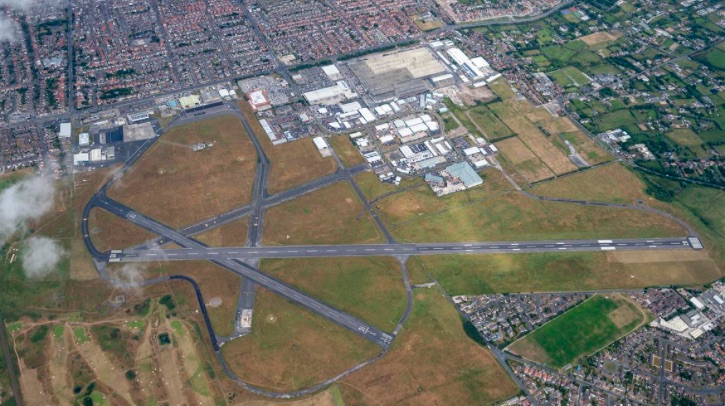Plans for a new office, security area and small passenger handling building at Blackpool Airport have been submitted to Fylde Council, which is responsible for the region.
If approved, the new offices will be built immediately behind the current buildings at the entrance to the airport. The plans are part of Blackpool Council and Blackpool Airport’s strategy to rebuild old airport infrastructure to make the airport more commercially successful and create new jobs. Blackpool Council reacquired Blackpool Airport from Balfour Beatty in September 2017 for £4.25m (US$5.4m).
The current administration and security buildings are well over 20 years old and need modernizing. The proposed new buildings would allow a combined service offering an enhanced arrivals and departures area, as well as a larger security checkpoint to host new x-ray and scanning equipment recently purchased by the airport. The passenger facility would allow the airport to increase the number of corporate aircraft and executive and charter flights it can handle. The building would also house three offices and a meeting room for the airport senior leadership team.
This is the latest in a range of plans submitted to upgrade the airport’s infrastructure. A planning application for a new road and hangars was announced last September and is expected to be decided on by Fylde Council later this summer. Future plans for the airport include new executive hangars at the west of the airport and a solar farm for land south of the main runway. A new fuel farm enabling the use of sustainable and alternative aviation fuels plus battery storage are also under consideration.
Around 39,000 flights took off and landed at Blackpool Airport in 2023. Architectural consultants Cassidy + Ashton and engineering consultants WSP have supported Blackpool Council on the masterplan for the airport.
In related news, the UK government’s Department for Transport (DfT) recently launched a £750,000 (US$960,000) round of funding for the Reach for the Sky skills and outreach program to help young people aged four to 18 from under-represented groups pursue a career in aviation, which they may not otherwise have had the opportunity to do. Click here to read the full story.


